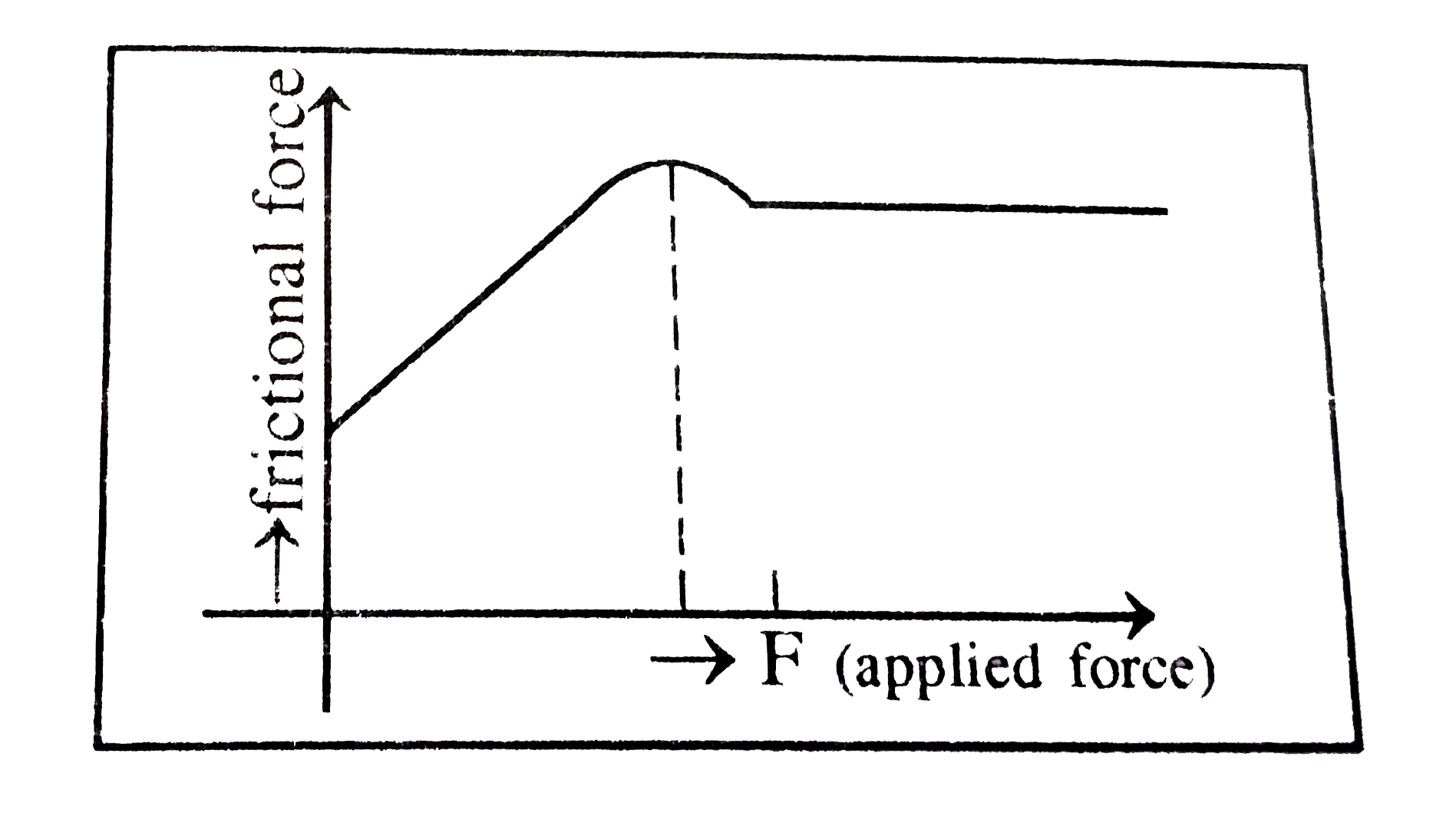"Friction is a self adjusting force" Why ?-
Step-by-Step Solution:
1. Understanding Friction: Friction is a force that opposes the relative motion between two surfaces in contact. It acts parallel to the surfaces and is dependent on the nature of the surfaces and the normal force acting between them.
2. Self-Adjusting Nature of Friction: The term "self-adjusting" means that the frictional force can change in response to the applied force without any external intervention.
3. Example Setup: Consider a block resting on a horizontal surface. The weight of the block acts downward due to gravity, and there is a normal force acting upward from the surface, which balances the weight.
4. Applied Force and Friction: When a small external force (P) is applied to the block, the frictional force (F) will match this applied force (P) as long as the block does not move. This means that if the applied force is small enough, the friction will adjust to be equal to the applied force, preventing any relative motion.
5. Increasing the Applied Force: If we gradually increase the applied force (P), the frictional force will also increase correspondingly, maintaining the condition of no relative motion. This continues until the applied force exceeds a certain threshold known as the maximum static friction.
6. Transition to Motion: Once the applied force surpasses the maximum static friction, the block will begin to move. At this point, kinetic friction comes into play, which is usually less than maximum static friction. The kinetic friction will also adjust to the applied force but will have a constant value as long as the block is in motion.
7. Conclusion: Therefore, friction is termed a self-adjusting force because it continuously adjusts its magnitude to match the applied force up to its maximum limit, thus preventing relative motion between the surfaces until that limit is exceeded.
Topper's Solved these Questions
- FRICTIONBOOK - ICSECHAPTER - FRICTIONEXERCISE - Selected problems
30 Videos
- FRICTIONBOOK - ICSECHAPTER - FRICTIONEXERCISE - Short answer question
30 Videos
- DYNAMICSBOOK - ICSECHAPTER - DYNAMICSEXERCISE - SHORT ANSWER QUESTIONS WITH ANSWERS
12 Videos
- GRAVITATIONBOOK - ICSECHAPTER - GRAVITATIONEXERCISE - FROM THE HUBBLE TELESCOP
2 Videos
Similar Questions
Knowledge Check
Assertion : Static friction is a self-adjusting force upto its limit μsNwhereμs is the coefficient of static friction.
Reason: One can use the equation fs=μsN only when the maximum value of static friction comes into playAIf both assertion and reason are true and reason is the correct explanation of assertion.BIf both assertion and reason are true and reason is the not correct explanation of assertion.CIf assertion is true but reason is falseDIf both assertion and reason are false.Which of the following is a self adjusting force ?
AStatic frictionBRolling frictionCSliding frictionDDynamic friction
Assertion: Friction is a self-adjusting force.
Reason: A block on the horizontal table is acted upon by a force F. The graph of frictional force against applied force F is.

View SolutionAssertion: Static frictional force is a self adjusting force.
Reason: Force of static friction does not depend upon the mass of the body.
View SolutionAnswer the question briefly and the point:
Friction is a non-conservative force. Why?
View SolutionThese questions consists of two statements each printed as Assertion and Reason. While answering these question you are required to choose any one of the following four responses
Assertion Friction opposes motion of a body.
Reason Static friction is self adjusting while kinetic friction is constant.
View Solution(A) : A coin placed on a rotating disc flies away if the angular velocity is gradually increased
(R ) : Static friciton is self adjusting in nature.
View Solution(A) : The friction gives the necessary centripetal force at the unbanked curved path
( R) : When a body is moving an un banked curved path below the maximum safe velocity friction has self adjusting nature
View Solution
